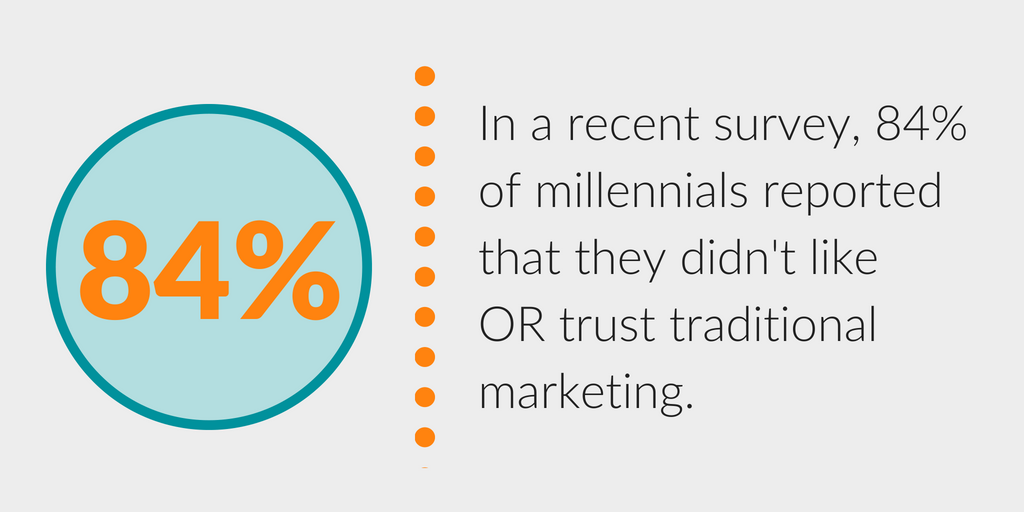How to Get Millennials to Support Your Cause
Now is the time to ask: how can your nonprofit engage the millennial generation?
Born between 1981 and 1996, millennials are out of college and entering the workforce. Numbering roughly 80 million, they’re part of the largest generation in U.S. history. Although they might not be your biggest donors right away, they are poised to shape philanthropy for decades to come.
With that in mind, it’s time to start thinking about your millennial engagement strategy. The millennial generation has a lot to offer and shares a deep commitment to building a better world. The founder of the Millennial Impact Study, Derrick Feldmann, put it succinctly: “Together, millennials and nonprofits can create solutions. But, if we as nonprofit entities won’t adjust to their needs, millennials – our new and future constituents –will move on without us.”
They will certainly be essential to your nonprofit’s long-term sustainability, so we’re taking a look at what makes millennials tick and offering suggestions for the best ways to get them involved with your cause.
Get to know the millennial generation…
They are digital natives.
From the earliest days of the personal computer to the latest smartphones and cloud-based applications, millennials have been using advanced technology for their entire lives. This is the generation that invented Facebook. They’re accustomed to a high level of connectivity and instant gratification. They have multiple social media profiles and check their phones frequently. They do pretty much everything online – from dating and movies to advocacy. A millennial donor doesn’t want to spend their time digging through a clunky website to find information or take action.
They are strongly influenced by friends.
Increased connectivity means more information than ever before. As a result, the millennial generation relies on the opinions of their peers to cut through the noise. From making purchasing decisions to charitable giving, they are more likely to respond to advice and requests from within their network than to outside advertising.
They hate ads and value authenticity.
Millennials are savvy consumers and advocates. They have seen enough to know the difference between commercial appeals and personalized asks. They want to hear from their friends – not a brand. In fact, in a recent study by the McCarthy group, 84% of millennials said that they didn’t like or trust traditional marketing efforts. They want to engage on their own terms and are more likely to respond to social media influencers and short videos of real people.
They’ve entered the workforce.
The youngest edge of the millennial generation is already out of college. As a whole, this group is poised to make up 75% of the global workforce by 2025. They don’t plan to keep the same job for long and are looking for ways to grow both personally and professionally.
They are cause-oriented.
Perhaps the strongest bridge between the millennial generation and your nonprofit is that they are deeply cause-driven. One of the takeaways from The Millennial Impact Report is that they are “more involved in causes than ever, and they don’t care much how we label or categorize them.” While they might not identify as activists, they do feel personally responsible for making life better for themselves, their peers, and marginalized groups.
…AND create engagement opportunities that millennials CAN relate to.
We’ve come up with a few suggestions to help forge these new relationships and boost engagement if they’re already in place:
Optimize your online presence.
When a millennial hears about your organization and wants to learn more about your work, they’ll head to your website. Once they get there, you’ll want to make sure your content looks good and is easy to use. Remember, this generation has been using the internet for a long time and has relatively high expectations. It’s worth investing some time into digital housekeeping with a brief website audit.
An active presence on Facebook will also build your credibility with millennials. While the newest users on the platform skew older, 41% still use Facebook every day. Note: we’re not advocating that you use it as your primary channel for reaching millennials, but rather as a way to establish and maintain a public profile to define who you are and what your work is about. If you’re interested more generally in using social media for engagement, you should check out these 5 key steps.
Focus on volunteering to build mutually beneficial relationships.
If your nonprofit needs to fill volunteer positions, asking millennials for their support is a great way to begin building relationships. And they’re used to giving their time to support causes they care about: nearly half of millennials surveyed in the 2016 Millennial Impact Report had spent time in the previous month volunteering.
Two of the best ways to engage millennial volunteers are when you need pro bono services or help running your upcoming events.
Project-based work and opportunities to build leadership skills are highly valuable to a generation that’s keen on professional development. They’ll see their volunteer work as beneficial on a number of levels: they can gain new skills and you can get the services you need, all while building support for an important cause. Keep in mind that evenings and weekends—or even flexible work from home projects—will work best for younger people managing work schedules and other obligations.
Once they volunteer with your organization, you can follow these best practices to get to know them and keep them involved.
Make your fundraising social.
Wary of ads but trusting of recommendations from friends, millennials are building support for the causes they care about online. When you host your next online fundraiser, take the time to reach out personally to millennials in your network. Your appeal for financial support is much more likely to be successful if it comes directly from a friend. Ask them to share your campaign with their networks on social media, and give them the opportunity to create their own peer-to-peer campaigns—especially if they’ve volunteered with your organization in the past.
You can also get your local millennial supporters together for a happy hour where they can give back. Creating an after-work event where they can invite friends and engage with like-minded peers will give you the chance to raise awareness for your nonprofit and funds to support your work. You can sell tickets in advance and collect donations directly via mobile phone during the event. If you’ve ever heard the phrase, “rosé all day,” or “wine not,” you’ll know millennials love wine almost as much as social change. Making a toast to social change is the perfect pairing.
We’re here to help: we know that keeping your website up-to-date can be a full-time job. Along with integrated tools for volunteer management, peer-to-peer campaigns, and mobile giving, Flipcause offers a free website package with your subscription. Check out a few of the hundreds of modern, mobile-responsive websites we’ve built for our clients and request a demo to learn more!
Main photo courtesy of Jopwell.com.
Are you successfully engaging millennials as volunteers and donors? We’d love to learn what works for your organization in the comments below!


Very useful as I’m just starting up an organization for Autism.
Glad to hear it and excited to see the impact you will make!